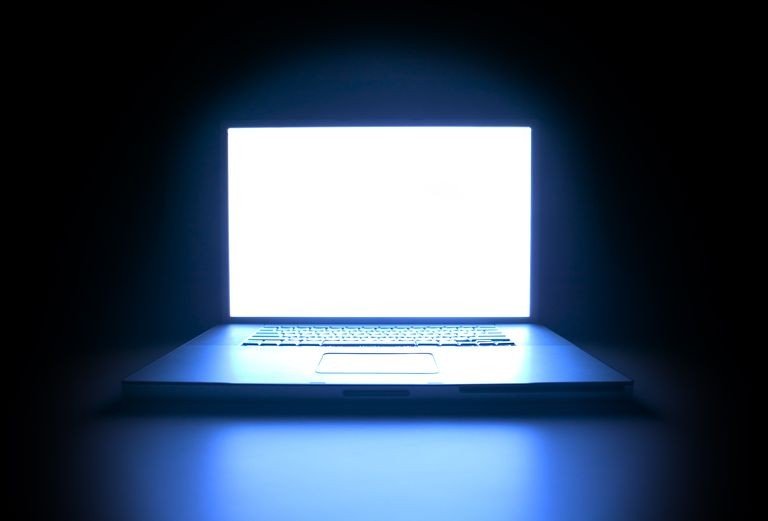Scrolling through social media on your smartphones, reading on tablets, or catching up on some late-night Netflix in bed, is the new “cool”. little do we realize that this new “cool” comes with a heavy price tag!
Your brain has an internal clock that regulates your circadian rhythm, the 24-hour biological cycle that influences many internal functions.
Most importantly, it determines when your body is programmed for being awake or asleep.
However, your circadian rhythm needs signals from the external environment like daytime and darkness, to adjust itself.
Talking about light, different colors of light have a different effect. With regard to sleep onset, blue light plays a very crucial role. Blue light has a short wavelength and while these are beneficial during daylight hours as it boosts attention, reaction times, and mood, however, seem to be the most disruptive at night.
It is blue light’s role in governing circadian rhythms that poses a greater concern for public health. Let us understand what is blue light and how is it problematic?
Our environment filled with modern energy-efficient bulbs like LED lights and the addiction to electronics with screens is increasing our exposure to blue wavelengths, especially after sundown. Exposure to blue light is the most disruptive at night as it adversely affects levels of melatonin more than any other wavelength does. The hormone melatonin, tells our body to get tired and go to sleep, playing the most crucial role in the sleep onset. The brain begins to secret melatonin a couple of hours before bedtime, and the hormone reaches its peak in the middle of the night. When people work on a blue light-emitting device (like a tablet, laptop, TV, mobile phones in the evening, it delays the sleep onset (taking them longer to fall asleep) plus, this leads to less REM sleep (when dreams occur) and un-refreshing mornings and sleepier days even after eight hours of shuteye.
Blue light in the evening tricks your brain into thinking it’s daytime. Even dim light can disrupt your circadian rhythm and melatonin release. As small as eight lux of light which is twice that of a usual night light has an effect. This is one of the reasons why so many people don’t get enough good quality sleep. Several studies have shown that short sleep duration is associated with increased risk for depression, as well as diabetes and cardiovascular problems. Some studies suggest a link between exposure to light at night, such as working the night shift, to some types of cancer, diabetes, heart disease, and obesity.
How Blue Light Affects Kids & Sleep?
Let us admit, for most modern parents, electronic devices like tablets, smartphones, TV’s come as a rescue, be it to feed them, while shopping, during car rides or for simply keeping them entertained. As a result, children are exposed to a lot of blue light than ever before. Parents must know that their child may be paying a heavy price for basking in all that blue light. Children’s eyes are more sensitive to blue light. They are sleeping poorly with delayed sleep onset and shorter sleep duration, as a result of which they fail to get their recommended 8-13 hours of restful z’s each night. According to the National Sleep Foundation, kids between 6 and 17 years old who have at least one electronic device in their bedroom sleep one full hour less on school nights.
Plus, blue light keeps their body temp from dropping like it’s supposed to during slumber, hitting their sleep quality even more. This gets all the more serious in teens as their circadian rhythms are already shifting naturally. All this is resulting in poorly rested, sleep-deprived kids that show behavioral problems such as hyperactivity, aggressiveness, poor memory, to name a few.
And, just as the same consequences as adults, if sleep deprivation continues for a child, their risk of weight gain, diabetes, and other serious physical and mental health issues increases. Additionally, excessive screen time can also result in digital eye strain, which can include burning or tired eyes, blurred vision. Headaches, fatigue, loss of focus, and head and neck pain are other threats for children using screens too often and too long.
Here’s what you can do to create a sleepy environment to promote sleep for yourself and your family.
- Cut down your and child’s digital use. To minimize the negative impacts of blue light exposure The American Academy of Paediatrics recommends limiting the amount of kids’ entertainment screen time to two hours a day.
- Prepare yourself and children for bedtime by switching off electronics, including the TV, tablets, smartphones two hours before bedtime as this will start producing more melatonin and facilitate good quality and quantity of sleep.
- And if powering down the computer is not a possible option then consider dimming the brightness on the screen.
- Replace LED night lights with dim red lights. Red light has the least power to shift circadian rhythm and suppress melatonin.
- A simple rule of thumb is to expose yourself to “bright days, dark nights.” It’s also important to expose yourself to plenty of blue light during the day. If you can, go outside to get sunlight exposure.
At SleepMoksha we help individuals, children, and companies to improve their sleep for better health, productivity, and happiness. We develop training programs that measure their sleep, identifies their sleep challenges and we work with them on a customizable plan to get them sleeping better and feeling more alert in just a few weeks. We utilize Behavioral Sleep Medicine practices.
